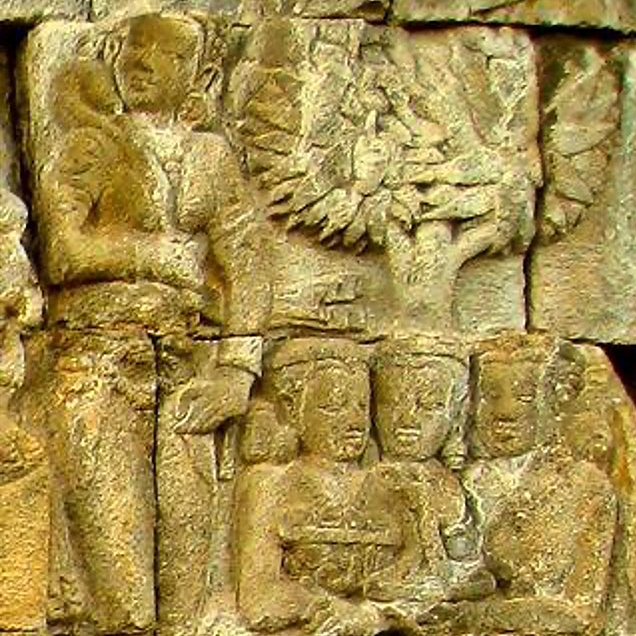Preface and Story
This is a story about the Buddha’s wife. In many Buddhist texts the Buddha’s wife is called Yasodhara, but in this story from the Lalitavistara, a Sanskrit biography of the Buddha, the Buddha’s wife is named Gopa. They may be two names for the same person; in texts from the Theravada traditions, Yasodhara is variously called Bhadda Kaccana, Rahulamata, and Bimba. According to texts in the Tibetan Kanjur and some other northern sources, however, Gopa and Yasodhara were two different wives of Prince Siddhartha, the future Buddha.
The events described in this story are not found in other Buddha biographies. Gopa’s boldness in speaking out and her agency in doing so are striking. While the story and its details may be singular to the Lalitavistara, its general significance obviously is not.
Story
At that time, Dandapani a Sakya gave in marriage his own daughter, Gopa, herself a Sakya girl, to the future Buddha. King Suddhodana had already seen that that princess was special enough for his son, the future Buddha.
After the marriage was consummated, Gopa was consecrated crown princess and she was recognized as superior to all the many thousands of women who also lived inside the women’s quarters of the royal inner city.
No matter who she was with, the Sakya girl Gopa never covered her face or mouth; not when she was with her mother-in-law, nor with her father-in-law, nor with anyone inside the royal inner city. People ruminated over her as they went about their business, thinking, “A young woman who is a new wife should be unassuming and keep back, but this one thinks she’s special and is up front all the time.” When Gopa heard the crude things said about her, she spoke these verses, standing in front of all the people of the royal inner city:
The one not ordinary shines out in the open,
whether sitting, standing, or walking,
Like a glistening gem on top of a parade flagpole,
its gleaming light the first thing seen.Going or coming, someone not ordinary always shines,
standing or sitting, the one not ordinary shines everywhere.Making a sound– shining,
silent–also shining,
the one not ordinary is like
the kalavinka bird in looks and sounds.
Someone may wear rough grass made into clothes,
be dressed in threadbare rags, he may be skin and bones,
but if he is virtuous and is adorned with virtues
he shines from within with an intense brightness all his own.
All told, the one not ordinary shines, evil doesn’t exist for him,
while the fool who does evil never shines no matter what he puts on.
There are some who speak sweet words but their hearts are foul,
like a pot of poison sprinkled on top with a tincture that wards off death;
they have hearts as hard as the stone inside rocks
and just as rough to the touch;
even the sight of anyone like that repulses, like seeing a snake.
Those not ordinary refresh, gentle as cool moonlight,
all those who come and bend before them;
they are as welcoming as a shallow river ford to every living thing;
Those not ordinary are like
a pot filled with fresh milk and buttermilk;
just to see people like that, their insides so pure,
is to see a visible sign of an invisible grace.
Those who have chased away evil friends
are ever-surrounded by gems in the form of beautiful friends;
anyone who rejects sin and enters into the teaching of the Buddha
is beneficial, a visible sign of an invisible grace.
Why cover the face or mouth of anyone
who has no bodily flaws because of a guarded body,
who never speaks heedlessly because of a guarded mouth,
whose senses are guarded and whose mind is clear and still?
Anyone can cover themselves with a thousand cloths,
but if when their minds are uncovered,
there is neither shame nor modesty,
neither virtues nor truthful speech,
don’t they wander the world more naked than the naked?
Why cover the face or mouth of anyone
whose mind is guarded, whose senses are always in check,
someone who is happy with her own husband,
without a mind that goes after others,
who shines out in the open, just like the sun and the moon?
Moreover,
Sages, mahatmas,
those who are skilled in knowing the thoughts of others,
and those in the assemblies of gods,
they all know my hopes and wishes;
as long as my morality, my virtue, my restraint,
my carefulness are highly-esteemed by them,
why would I cover my face with a veil?
King Suddhodana heard all of these verses of the Sakya girl Gopa, each of them eloquent and instructive, and as he heard them, he became happy again and was uplifted, he was filled with joy and glad understanding.
He then covered Gopa, the Sakya girl, with a pair of cloths that were set with various kinds of jewels and a golden necklace set with red pearls in strings hanging down, a necklace of the greatest value, and voiced his experience in the following way:
Just as my son is adorned with virtues,
so this girl is well-adorned with her own virtues,
that these two pure beings have come together
is just like butter mixing with ghee.
Translated from Sanskrit for this website by Charles Hallisey.
